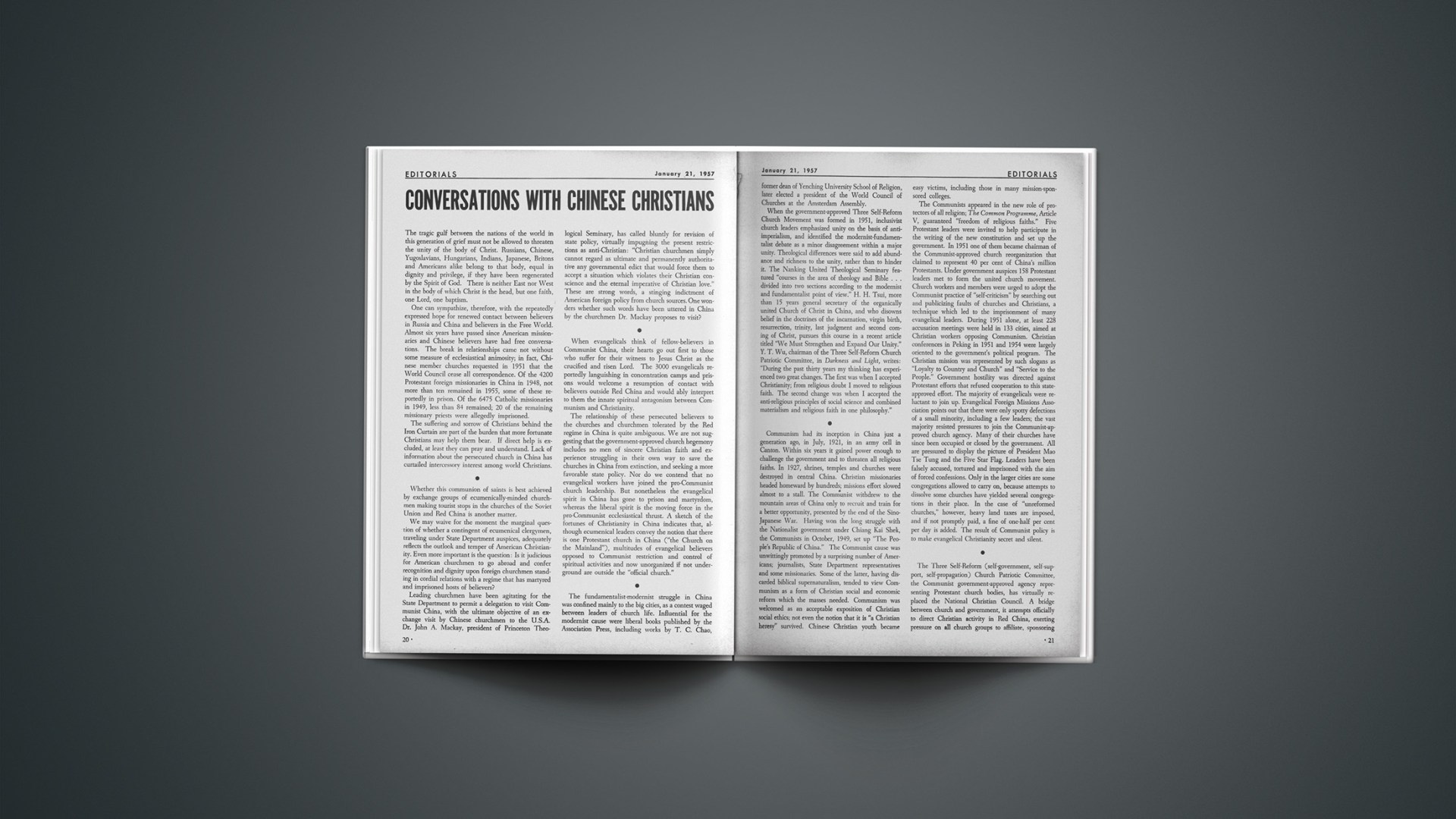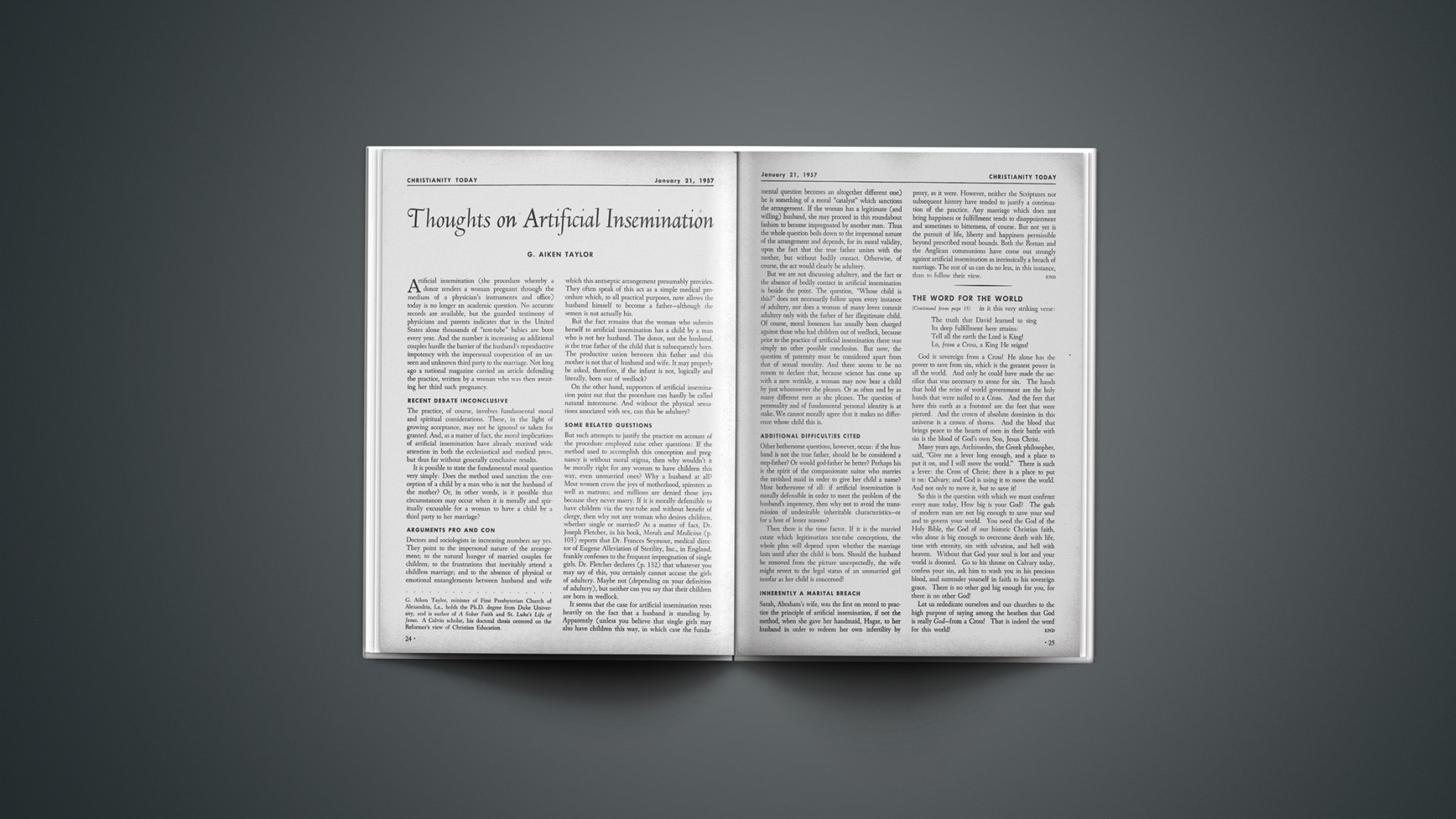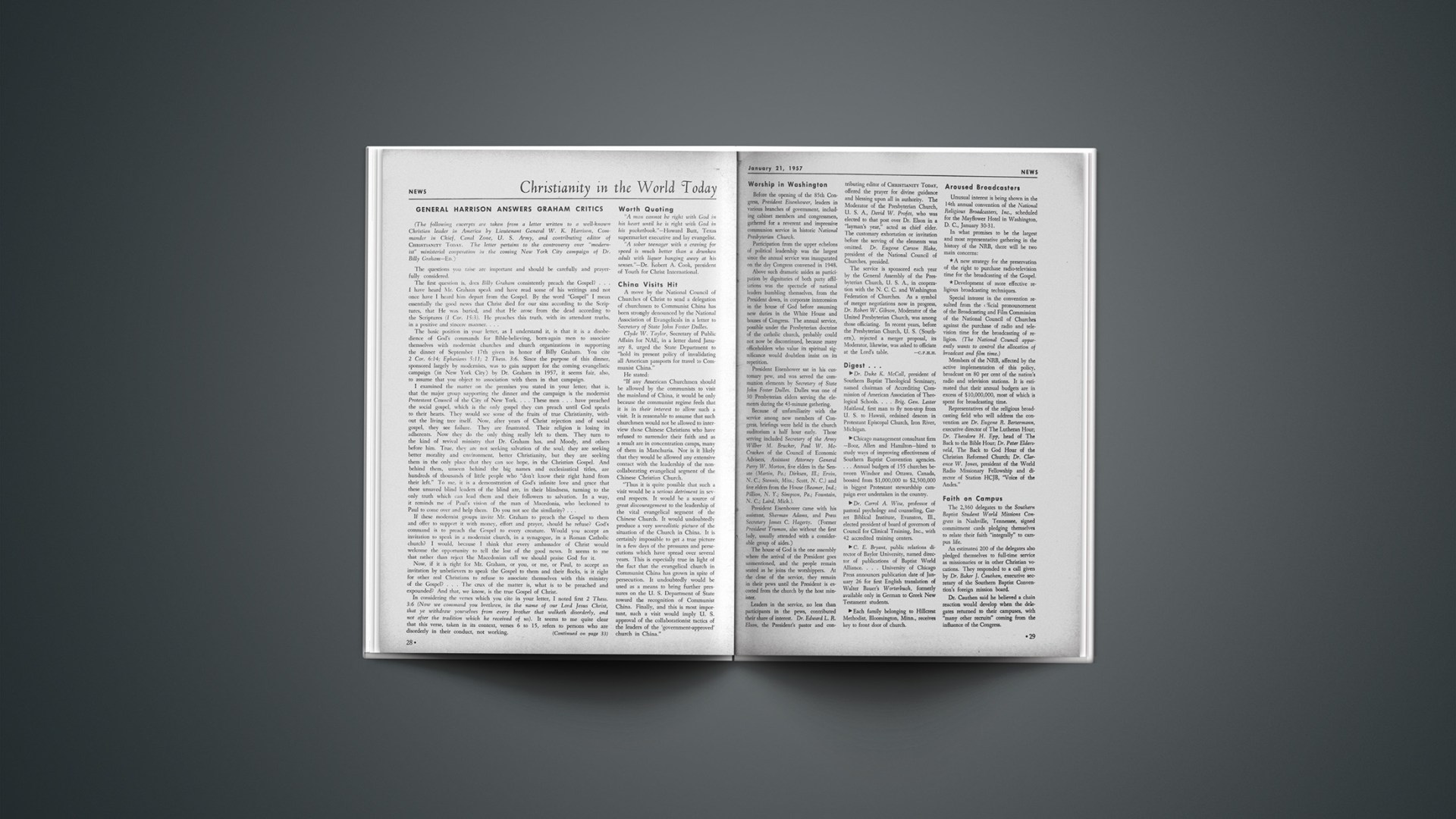Enthusiasm for ecumencity has taken firm hold on the ecclesiastical world. Constant discussion and debate revolve about the ecumenical movement and its goals, but unanimity concerning the objectives involved has not been reached. To some the goal is deepening fellowship and widening areas of cooperation. To others the aim is visible, organic union—a single comprehensive organization of the churches. Nothing less than a visible structure would satisfy many ecumenists. For such the very word ecumenical connotes visible organizational unity of the church.
Advocates of organic union appeal constantly to the petition uttered by Christ in his high priestly prayer: “That they all may be one; as thou, Father, art in me, and I in thee, that they also may be one in us; that the world may believe that thou hast sent me” (John 17:21). It has been assumed that this earnest appeal pleads for corporate church union.
Visible Church Unity
Christ’s supplication, without a doubt, does press for visible church unity. Without a visible oneness how could the burden of the petition be effected “that the world may believe that thou hast sent me”? The world cannot behold the invisible. Surely the world would be more inclined to believe the divine mission of Christ if unity among professing Christians were perceptible. Christendom split into fragments must puzzle the unregenerate world and cause it to doubt the value of Christ’s entrance into history. The church united in faith, love, worship and purpose would not fail to impress the world and engender respect for her Leader.
Those who would belittle church unity must quarrel with the petition of Christ. He definitely prays the Father to establish a visible unity among his followers that the world may believe in his mission. While recognizing this need the evangelical, however, is distressed that many ecumenists pay scant attention to the type of church unity for which Christ pleads. In spite of the definitional clause in the petition the ecumenist envisions his type of union—a single comprehensive organization with some acceptable government whether congregational, presbyterian or episcopal. Was this ecumenical church in the mind of Christ as he petitioned the Father?
Our Lord defined the unity he desired with the clause “as thou, Father, art in me, and I in thee.” The particle as cannot be ignored if one would interpret the mind of Christ. The concord that exists between the Father and the Son forms the pattern of unity for which the church must strive.
One In Doctrine
Obviously, harmony exists between the Father and the Son in regard to doctrine. Jesus insisted that his teachings were in agreement with the Father. “My doctrine is not mine, but his that sent me,” he claimed in John 7:16. He said further, “I speak to the world those things which I have heard of Him.… I do nothing of myself; but as my Father hath taught me” (John 8:26, 28). Again he said, “For I have not spoken of myself, but the Father which sent me, he gave me a commandment, what I should say, and what I should speak” (John 12:49). These are but a few passages in which Jesus strongly maintains that his doctrine is identical with that of the Father. Unity with contradictions in doctrine was not the burden of the high priestly prayer.
Impatient designers of the ecumenical church shudder at the thought of doctrinal unity, which either appears unimportant or impossible of achievement. Fear has been expressed that doctrinal emphasis will scuttle the ecumenical movement. Yet how can two walk together except they be agreed? Since Jesus stressed doctrinal agreement between the Father and himself, how can any movement worthy of his name ignore this important cohesive force? Organizational union without concord in doctrine will fail to impress the observant world. Actually, doctrinal unity is an important ingredient of the mortar which will hold together the living stones of the Temple of God.
One In Purpose
Between the Father and the Son there was mutual agreement in the carrying on of the work of redemption. They were one in purpose. Jesus said, “For I came down from heaven, not to do mine own will, but the will of him that sent me.… And this is the will of him that sent me, that every one which seeth the Son, and believeth on him, may have everlasting life” (John 6:38, 40). The will of the Father was the salvation of his people through the atoning work of Christ upon the cross. Thus Jesus could say in anticipation of Calvary, “I have finished the work which thou gavest me to do” (John 17:4).
The church must echo that agreement of purpose by proclaiming the message of redemption to every creature. Salvation of the lost was the purpose for which God sent his Son into the world. In fulfilling this mission the Church comes into the unity of the Father and the Son. The rapid growth of the first-century church can in part be ascribed to the unity manifested by believers in proclaiming the message of redemption. Organizational unity, where the one purpose of proclaiming redemption does not exist, will fail to impress the unbelieving world.
One In Love
The pagan world stood amazed at the demonstration of love in the lives of believers. “How these Christians love one another. They are even ready to die for each other,” was the discerning remark of a pagan. The church is described as being of one heart and of one soul in Acts 4:32. What affected one affected all. With surprise and admiration the first-century world beheld a fellowship bound by love, embracing men of every race and language. This was the visible unity for which Jesus prayed and which astonished the world.
The present ecumenical movement can never succeed until the desire for closer union springs from dynamic love in the hearts of church members. Many are enamored of ecumenicity because a comprehensive organization seems more efficient and more economical. Many are impressed because church leaders stress its importance. However, a unity brought about by economic reasons or by ecclesiastical pressure has no resemblance to unity engendered by love. A unity built upon superficial motives has little resemblance to the unity of heart and soul of the early church. Nor is it the unity for which Jesus prayed.
Unity Of Early Church
No one will seriously argue that there has been a complete fulfillment of the Lord’s petition in history. Nevertheless, the first-century church does reflect a great unity of doctrine, faith, life and purpose. The Epistles reveal the struggle of the church to achieve the type of unity for which Christ prayed. For instance, the epistle to the Galatians shows how Paul withstood the infiltration of false doctrine lest it split the church. Further, in Ephesians 4:11–14 he emphasized that the work of the ministry was to bring the Church “in the unity of the faith, and of the knowledge of the Son of God, unto a perfect man, unto the measure of the stature of the fulness of Christ: that we henceforth be no more children, tossed to and fro, and carried about with every wind of doctrine.” Faith and knowledge that has the Son of God as the object will bring about genuine unity—a unity that can be destroyed only by heresy.
Central Control
Recent writers have despaired of finding a pattern for their conception of the ecumenical church in the New Testament. John Knox writes, “Our recognition of the fact that the church, which has never been fully united in a visible unity, was not thus united in the Apostolic Age, will keep us from interpreting the goal of the ecumenical movement as being simply the restoration of the forms and usages of the early church” (The Early Church and the Coming Great Church, p. 15). He maintains also that “There was no one over-all organization and no central control” (ibid., p. 43); and “There was no single comprehensive organization of the churches; nor can a universal pattern of organization be traced among all the churches severally” (ibid., p. 83).
The absence of “central control” is explained by the consciousness of the New Testament church that the headship of Christ was a living and vital reality. Expression of the fact is found in Colossians 2:19: “And not holding the Head, from which the body by joints and bands having nourishment ministered and knit together increaseth with the increase of God.” Here is true organic unity—a spiritual unity which may disappoint those who feel that organizational unity is the high goal of ecumenicity. The New Testament, however, emphasizes the spiritual Headship of Christ and the spiritual unity of believers.
Visible unity of the church is the desperate need of the present day. Its absence harms the cause of Christianity. Yet the only effectual unity is the unity for which Christ prayed and which the New Testament Church illustrated. The Church today must not yield to the temptation to search for a more human and a lower pattern for the sake of immediate achievement. There must be no bypassing of the pattern of unity expressed in the Lord’s petition, “as thou, Father, art in me, and I in thee” and the pattern of unity exemplified by the early church. While this spiritual unity may take longer to achieve, it is that for which our Lord prayed.











